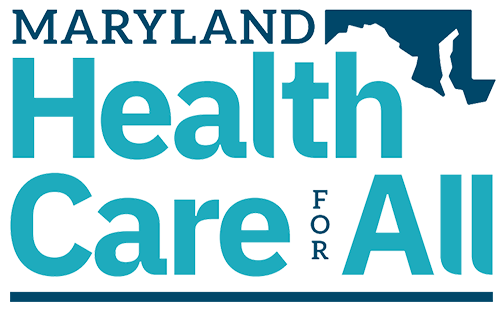“Health Care Reform and Your Community”: Speakers on the Panel (Left to Right) LEIGH COBB: Health Policy Director, Advocates for Children and Youth; SUZANNE SCHLATTMAN: Deputy Director for Development and Community Outreach, Maryland Citizen’s Health Initiativ Education Fund, Inc; DANIELLE DAVIS: Director of Communications, Outreach and Training. Maryland Health Benefit Exchange
March 19, 2013
India This Week, Express India
By Sam Prasad Jillella
BALTIMORE, MD — America’s Patient Protection and Affordable Care Act (PPACA), popularly known as “Obama Care,” was passed by the Senate on December 24, 2009, and by the Congress on March 21, 2010.
President Obama signed the Affordable Care Act into law, on March 23, 2010.
The Supreme Court, on June 28, 2012, upheld the Affordable Care Act, concluding that all Americans are required to have health insurance or pay a penalty. The Supreme Court ruling is: “If an individual does not maintain health insurance, the only consequence is that he must make an additional payment to the IRS when he pays his taxes.”
The Affordable Care Act makes it compulsory for every US citizen (US-born or naturalized), and every documented immigrant to purchase private health insurance. Health insurance firms are required to provide insurance coverage of pre-existing conditions.
Much of America’s health care costs are incurred because people, uneducated about their own health care, rush to the emergency room even for non-emergency care.
As per the Affordable Care Act, uninsured, self-employed citizens will be able to acquire insurance through state-based Exchanges. The Act will allow individuals and families with a household income between the range of 133 percent and 400 percent of the federal poverty level to obtain their own health insurance and be eligible for subsidies.
The health insurance Exchange is an organization that should be set up by individual states to create an organized, competitive market for buying health insurance. The Exchange is meant to offer a choice of different certified insurance providers that participate and provide information to help individuals and small businesses better understand their options. The federal government would step in if a state does not set up Exchange.
Lt. Governor Brown, who leads the O’Malley-Brown Administration’s health care reform efforts, announcing the federal grant, in a press release, said: “From the moment the President signed the Affordable Care Act into law, Maryland has moved forward aggressively to build our Exchange in order to expand access to affordable health care options.”
Governor Martin O’Malley wrote to Secretary Kathleen Sebelius, on October 9, 2012: “The Maryland Health Benefit Act of 2011 and 2012 established the Exchange’s governance structure, stakeholder process, and policy decisions necessary to guide its implementation and operations. The Board of Trustees was appointed in May 2011, and began working immediately to ensure that the development of the Exchange would stay on track to obtain certification in January 2013, launch open enrollment for individuals and small business by October 1, 2013, and be fully operational by January 1, 2014.”
Maryland Health Connection is the name for the marketplace where individuals and small businesses will shop and enroll for plans and programs.
The Maryland Health Benefit Exchange (MHBE), in partnership with Medicaid and the Maryland Department of Human Resources, will operate the Maryland Health Connection (www.MarylandHealthConnection.gov) as the online portal where individuals, families and small businesses will compare health insurance options, determine eligibility for tax credits and cost-sharing reductions, and enroll in qualified health plans or public programs, such as Medicaid and the Children’s Health Insurance Program (CHIP).
Marylanders can sign up for updates from Maryland Health Connection (www.MarylandHealthConnection.gov). Since October 2012, individuals and small businesses have been visiting the site to determine if they qualify for the health plan that suits them.
Maryland Health Connection is building a strong infrastructure to support the marketplace by working with health insurance carriers, insurance producers, assisters and advocates. Maryland Health Connection will be supported by a call center and in-person assistance will be available statewide by individuals known as “navigators.”
Presently the uninsured residents in Maryland are approximately 730,000, which is 13% of Maryland’s population. An estimated 180,000 individuals will enroll in health plans through Maryland Health Connection, the first year. Another 360,000 will enroll in the second year.
Lt. Governor Anthony G. Brown announced in a press release, in August 2012, that Maryland has received a $157 million Federal Grant to continue the development and implementation of the state-based health benefit Exchange that will become operational by October 2013, providing expanded access to quality, affordable health care to more Marylanders.
Maryland has done well in enrolling eligible children in Medicaid and CHIP. Since 2007 Maryland has seen a 34% overall increase in enrollments. There was an additional enrollment of 41,000 in the year 2011.
President Obama, on February 4, 2009, signed the Children’s Health Insurance Program Reauthorization Act (CHIPRA) into law. CHIPRA offers states new financial resources and options to improve health coverage for children through Medicaid and CHIP.
CHIPRA also offers a wide range of policy and programmatic “tools” to enable states to move their coverage efforts forward. In addition to providing an unprecedented amount of federal funding dedicated to outreach and enrollment efforts, the law authorizes several new policy options—like Express Lane Eligibility, coverage of pregnant women in CHIP, and removing the 5-year waiting period for lawfully residing immigrant children and pregnant women to enroll in Medicaid and CHIP. All of these tools have proven significant to states’ ability to find and enroll uninsured children and keep them enrolled for as long as they are eligible.
Maryland piloted another express lane eligibility effort that uses Free and Reduced Meals (FARMS) program applications in Baltimore City. Maryland won a federal bonus of $28. 3 million for 2011, and $36.47 million for 2012 .
Rebecca Pearce, Director of MHBE said: “The Maryland Health Connection will bring affordable health insurance coverage within reach of all Marylanders, creating a transparent marketplace for consumers and small businesses— providing them with information they can trust and understand.”
Commenting on the bonuses won by Maryland for child enrollment efforts, DHMH Secretary Dr. Joshua Sharfstein said, “We have great foundation for further progress with the Maryland Health Benefit Exchange.”
It is possible there are a good number of undocumented immigrants residing in Maryland. Are they eligible to buy health insurance in the individual market of the Exchange? No, they are not eligible. They are not eligible for tax credits, for premiums, or cost sharing for themselves. They are not eligible for federal Medicaid, CHIP, or Medicare.
Undocumented immigrants, as family members of mixed-status families, are eligible for tax credits. They are excluded from the individual mandate and related tax penalty.
Undocumented immigrants are eligible for emergency Medicaid. They can access care from public health centers, community health centers, and hospitals which do not restrict undocumented immigrants. Health coverage may be available through group health insurance, as a spouse or dependent. Health coverage could be purchased outside the Exchange.
According to the Hilltop Institute at the University of Maryland Baltimore County (UMBC), Governor O’Malley and Lt. Governor Brown, caused Maryland to make big strides in health care reform:
- Implemented reforms, and expanded health coverage to over 335,000 Marylanders, half of whom are children.
- Established Maryland’s Health Benefit Exchange (MHBE), and put the State in position to maximize the Affordable Care Act (ACA).
- Found that implementation of the ACA will benefit the state’s budget by $672 million through 2020, and generate more than $3 billion in annual economic activity.
- Cut the number of uninsured in half, and create more than 26,000 jobs.




